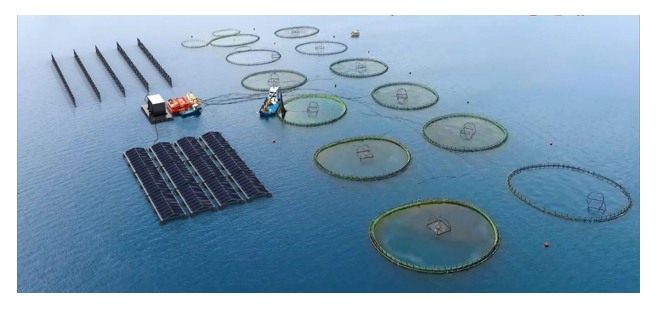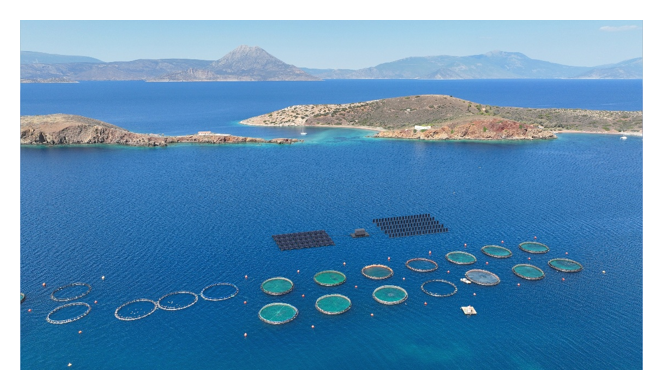GREEN ENERGY FOR BLUE MARKETS – SUSTAINABLE AQUACULTURE WITH A FUTURE
Management Summary
Aquaculture operations are undergoing structural transformation. Rising energy costs, increasing regulatory pressure, and growing demands for sustainability are putting conventional operating models under serious strain. At the same time, the deployment of maritime floating solar systems is opening new solution spaces. Integrating these technologies significantly improves environmental performance, reduces operational costs, and enhances infrastructure resilience. This trend is rapidly evolving into a new industry standard—independent of any single manufacturer—and represents a key pillar for the future viability of global aquaculture.
Vision
A hybrid energy model for aquaculture facilities that combines fluctuating renewable sources with energy storage systems—transforming diesel generators from primary energy sources into backup solutions. This system is embedded in a scalable infrastructure that can be integrated into existing operations without additional permitting, ensuring long-term compliance with regulatory sustainability requirements.
Opportunities
Aquaculture facilities stand to gain energy autonomy and improved supply security by integrating floating solar systems that directly feed into onboard battery storage. Diesel generators can still be used but with significantly reduced runtime, boosting resilience to supply disruptions. Operational costs drop dramatically due to reduced fuel use and maintenance, resulting in annual savings in the five-digit euro range per site, even with fluctuating CO₂ taxes. Sustainability improves markedly, enabling compliance with EU decarbonization standards and offering enhanced market appeal through certifications and green labels. Integration is straightforward, using existing infrastructure and avoiding new permitting procedures. This builds on proven technology from freshwater solar applications. Insurance benefits further strengthen the business case, as floating systems can be covered by marine insurers and standardized components reduce operational risks—offering greater investment security to all stakeholders.
Threats
Despite these opportunities, many aquaculture sites still rely heavily on diesel generators, resulting in high CO₂ emissions and risks of marine pollution. This dependence threatens long-term viability as environmental regulations become stricter. Electricity from diesel generators is costly and inefficient. It also exposes facilities to changing fuel prices and possible fuel shortages, making it hard to plan for the future. Regulatory pressure is mounting, with EU directives demanding tangible decarbonization and energy efficiency efforts. Non-compliance may lead to exclusion from key markets and subsidy programs. Moreover, traditional aquaculture operations that rely on diesel are increasingly facing criticism from both environmental groups and society. At the same time, consumer demand is shifting toward more transparent and sustainable production systems, putting additional pressure on industry to adapt. Without innovation in energy use, these facilities risk losing public trust and market relevance, potentially leading to stagnation or decline in support.

